
2012 • 9 • 5
I sat on a bench at the perimeter of the plaza and watched three boys play their version of Chinese garter. Their Chinese garter was not really a garter but a long bamboo stick. It’s “luksong tinik” quite literally. None of them, nevertheless, minded it.
The bubbliest of the three was Ben (not his real name). He was a determined, persistent fellow. He missed jumping over the hurdle successfully on his first try but tried and tried again but failed each time. Still, he asked his two friends to hold the stick on the shoulder level and made another attempt to bounce over it without touching the marker. He failed yet again. But I was not the only one watching someone that day. They were also returning the favor, even noticing the camera hanging from my neck.
“Kuya, kuya, picture!” shouted Ben.
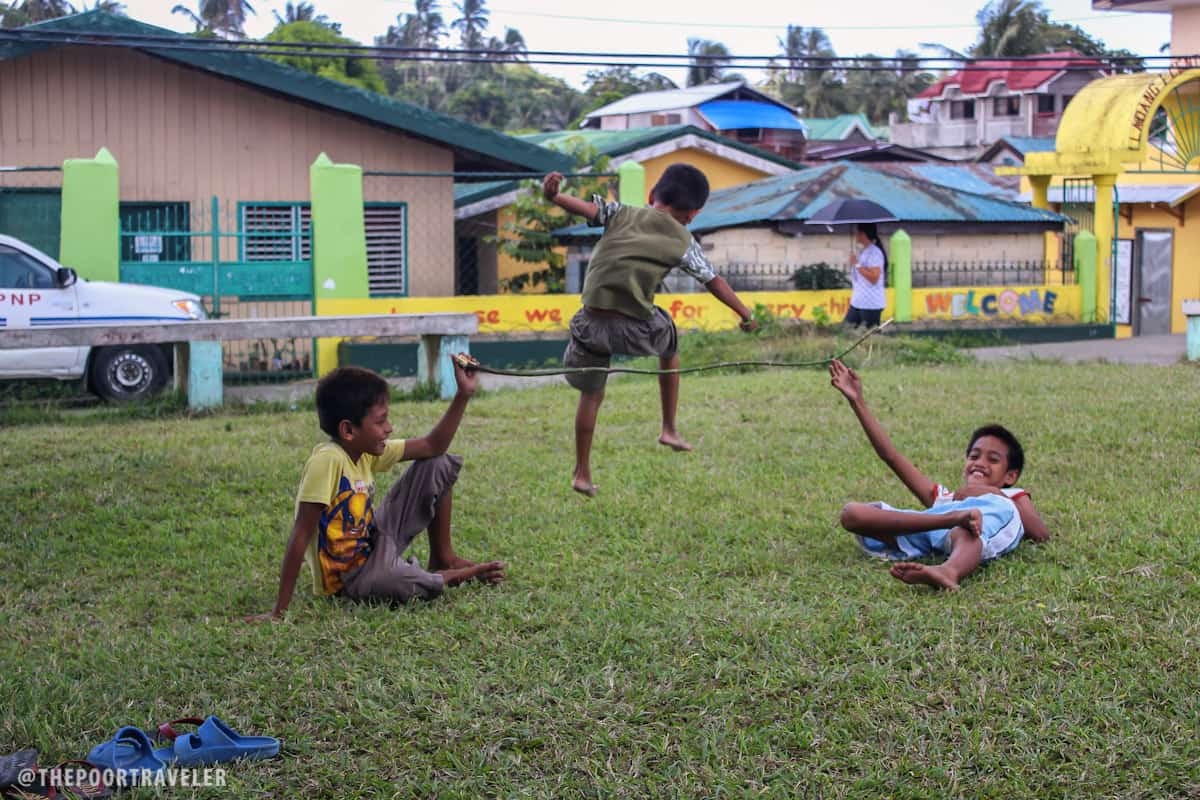
The moment I grabbed my camera, the three boys were already posing and smiling. Kids! After flaunting five poses or so, they invited me to join and play with them. Unfortunately, I was not in my fighting form; the pants I was wearing were rather tight, and I was afraid it would rip apart with just one big move. I declined and said I’d just take photos of them as they played.
The concrete bench in the west corner of the plaza that I was seated on was smoldering after hours of bathing in unforgiving sunlight. It was mid-afternoon and the plaza, the central park, was a playground to children who were trying to displace some juvenile energy. In the opposite corner was a tree under which a group of teenage girls gathered, sharing stories and a good laugh. From where I sat, I could see a number of the town’s most important landmarks — the St. Michael the Archangel Church (aka Laoang Church), the Shrine of the Immaculate Concepcion, and a big white cross in the middle strip of the plaza.
WHAT'S COVERED IN THIS GUIDE?
St. Michael The Archangel Parish (Laoang Church)
“Seventeenth century,” said one of the locals when we asked when this church was built. No one could give us an exact year but they were certain it was in the 1600s. Laoang Church, officially known as St. Michael the Archangel Parish Church, is the center of Catholic faith in the island of Laoang. Save for the bell tower, this church, especially its façade, really looked old and historical. We shared this comment with one of the locals and he said that it actually looked different years ago. I’m not sure if he mentioned a renovation or a repainting of the church but he claimed that it appeared more modern a few years ago but their new parish priest has them modified again to reclaim its “old look and feel.” Thank God for that parish priest.
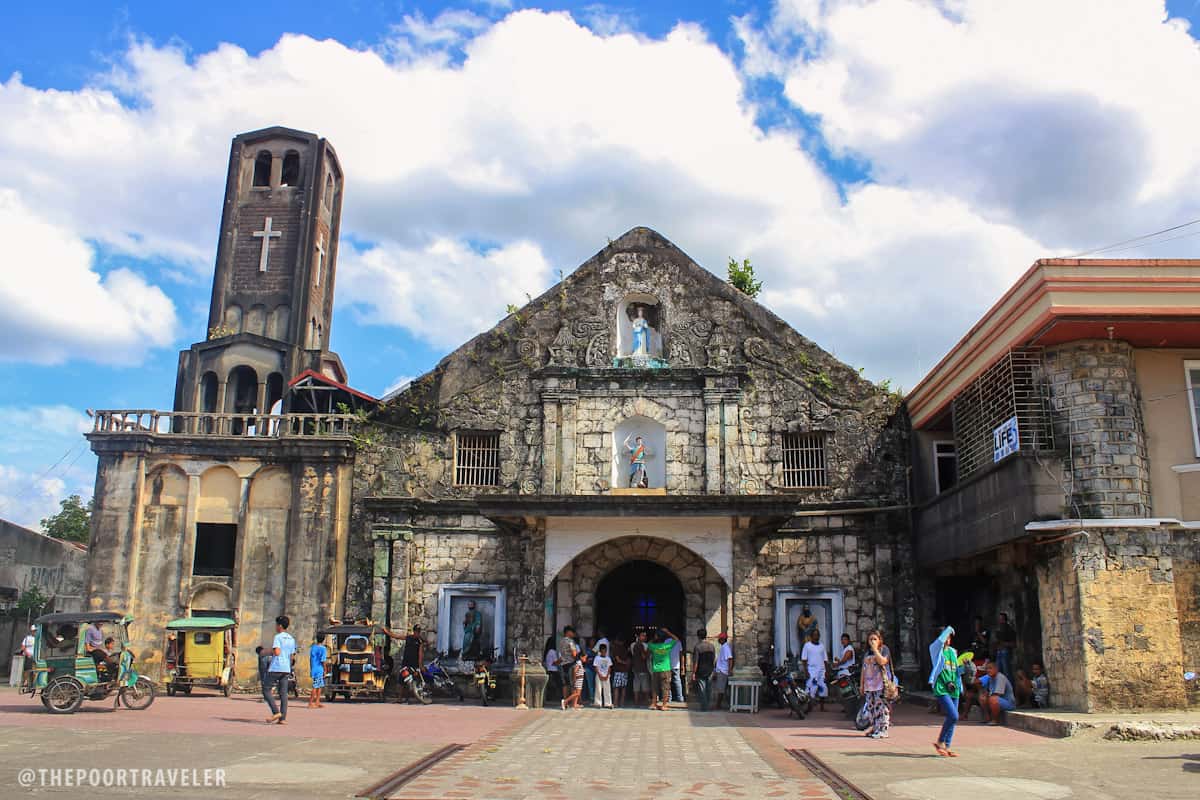
The most prominent part of the church’s façade is its massive triangular gable, taking almost half of the space. The gable holds two central arch niches above the main doorway with statues of St. Michael the Archangel, which the church is named after and is considered the guardian of the town, and probably the Virgin Mary (I couldn’t get a good look at the upper image; blame my poor eyesight). Two windows flank the lower niche while a massive relief runs throughout the façade, adding rich ornaments to the already commanding face of the structure. Statues of St. Paul and St. Peter stand in the bigger rectangular niches on the lower rectangular base.
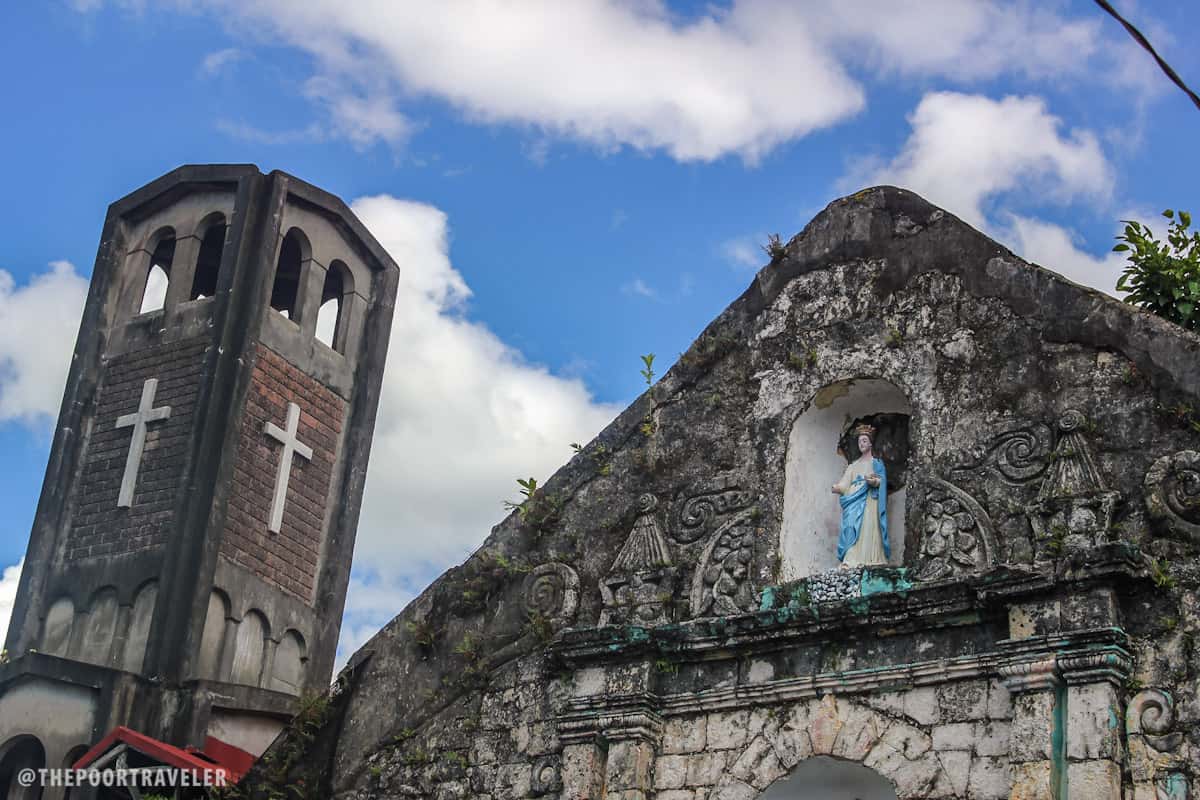
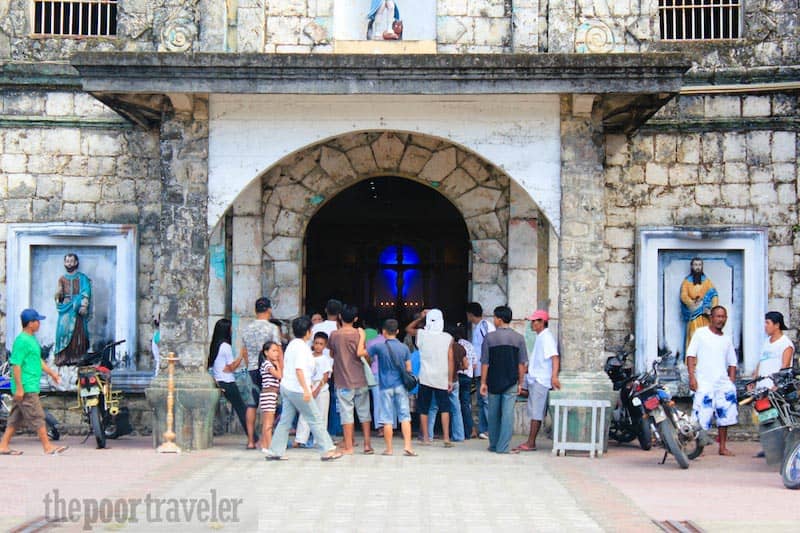
There was a wake at the church and Ate Jade, the town’s Tourism Officer, was quick to remind us to take the side aisles when exploring the church. A board explaining in detail the restoration process that the church had just undergone stood in the near right corner of the nave, which was surprisingly “modern-looking.” It was like we stepped into a completely different building. The interior seemed new: its smooth walls newly painted, its ceiling newly built, and its retablo newly installed. The restoration board explains the retablo — it collapsed during the onslaught of Typhoon Dinang in 1982. It said, “the retablo is made of concrete and wood, and the classical capitals (corinthian and ionic) and some other carvings are gilded with synthetic gold.”
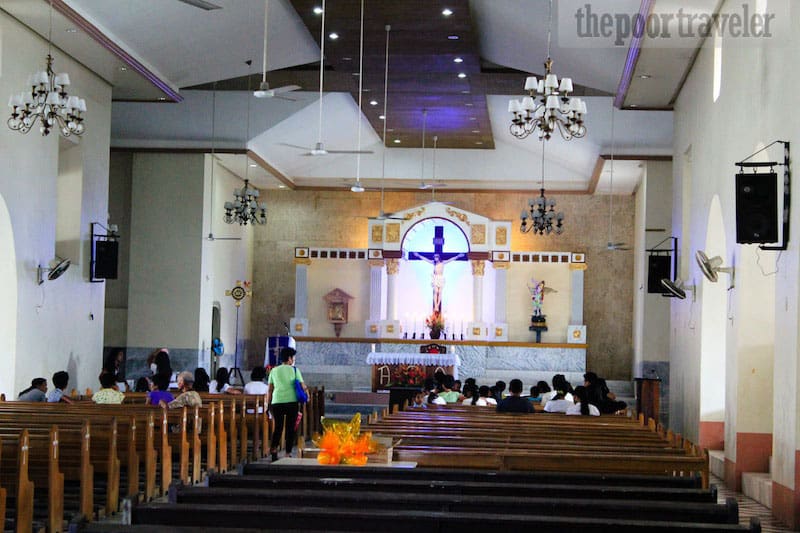
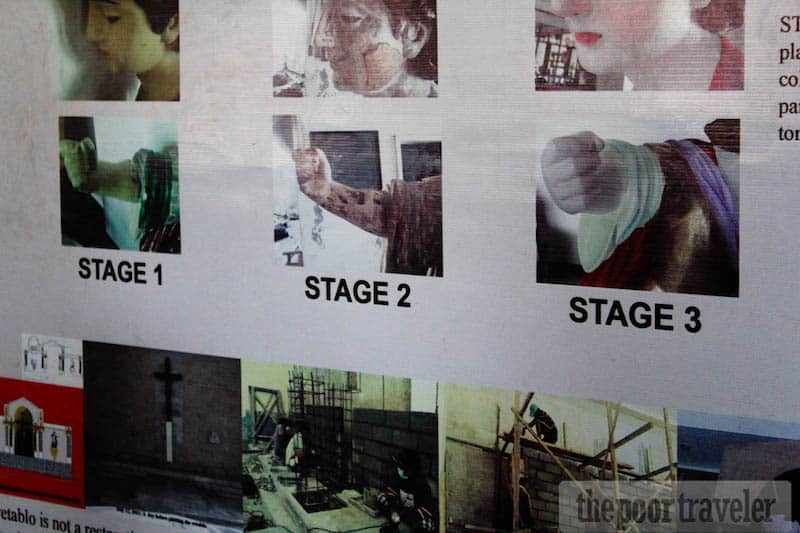

Almuraya Fortress
“This is Almuraya Fortress and that’s Muralla,” said Ate Jade. We were standing in the middle of the ruins of an old structure west of the church.
“Can you repeat that?” I requested. The names sounded alike to me and I just had to write them down on my notebook (which is forever with me). Ate Jade kindly explained everything to me but I have no idea why I couldn’t absorb anything. One of those days. What I understood was this: the site is called Almuraya Fortress and somewhere there is called “Muralla.” The Almuraya Fortress was a cobblestone wall and a watchtower that served as a defense of the town against the moro pirates. Today, only its ruins remain and the watchtower is hardly recognizable. It is, however, one of the most important places to visit in the island.
After doing an online research, “muralla” actually means “wall” or “rampart” so I’m guessing it is part of the fort, the Almuraya Fortress. (Don’t trust me on this, though; just a hunch.) But I also read somewhere that the “Muralla” was built to protect the town cemetery nearby. I’m now more confused than before I started reading.
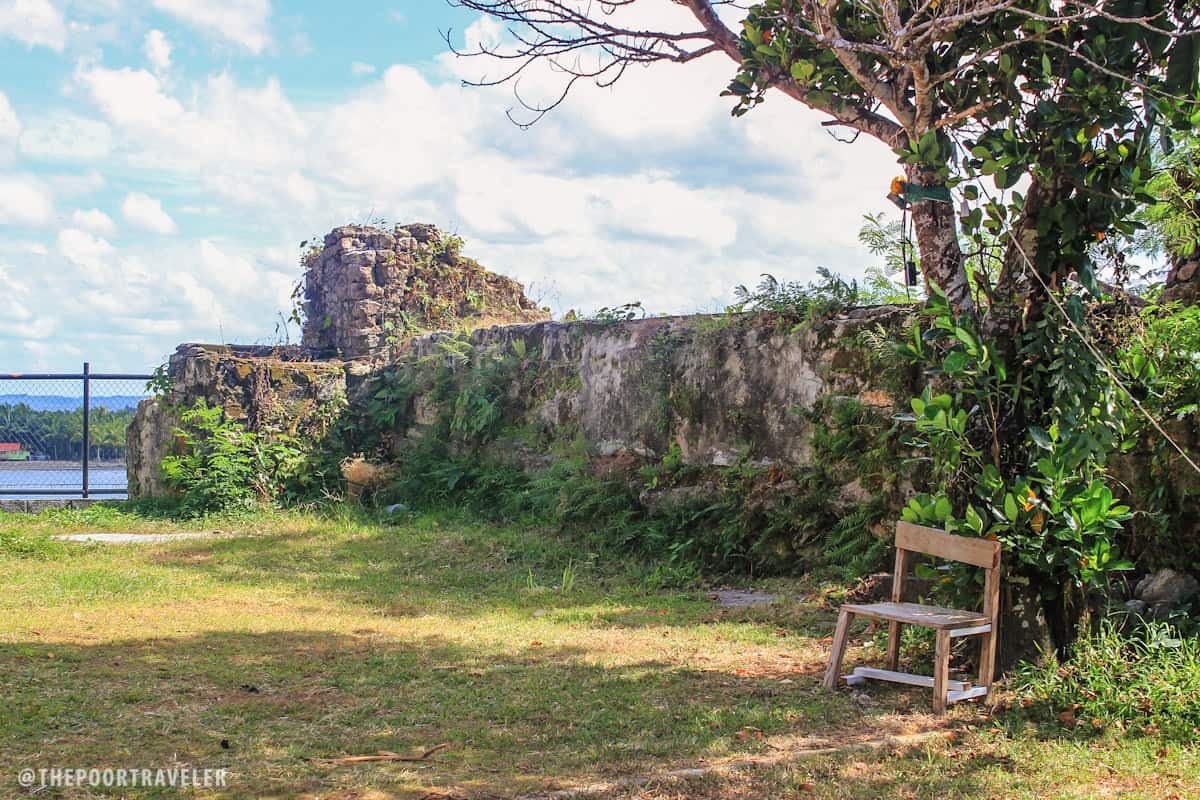
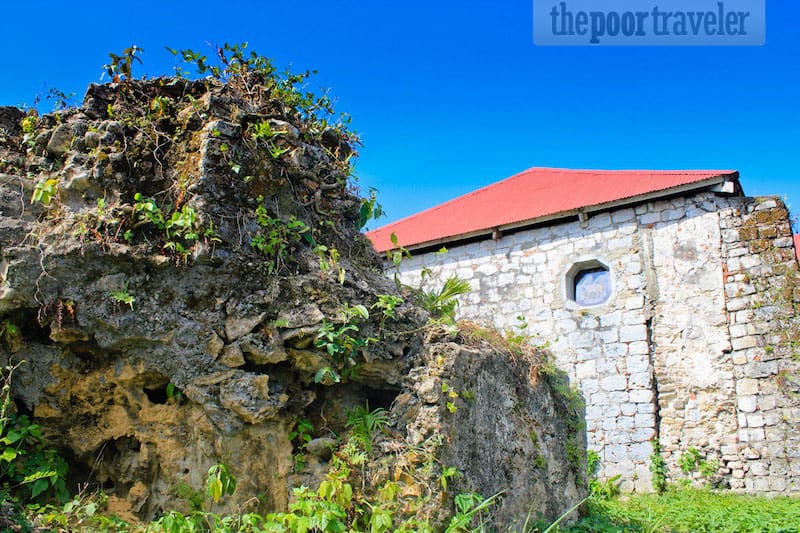
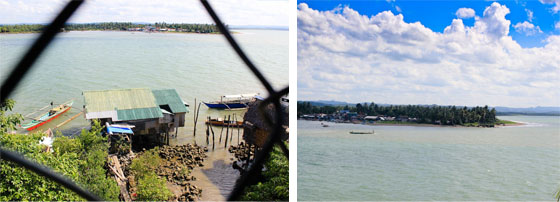
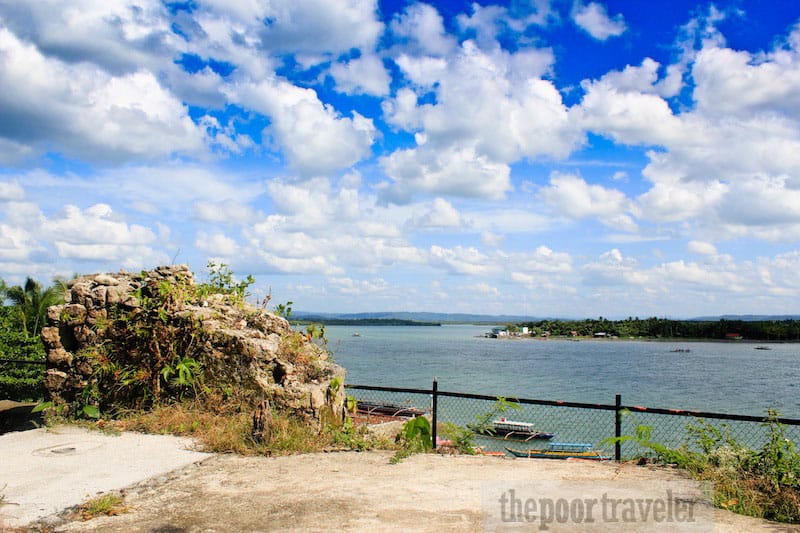
The best resource that I found was this piece by Msgr. Gaspar D. Balerite, H.P., S.Th.D. as published on this website, “To prevent the onslaughts of Moro invaders the Governor General proposed in 1814 the construction of defensive plans. Fr. Jose Mata, the parish priest of both Laoang and Palapag was cited for being the first to have launched a construction of ‘muralla’ in Laoang at his own expense.”
Anyone who can shed light on this, please do. I’m dying to know more about this site as ruins are some of my favorite things in the universe. :D
Plaza Inmaculada
Speaking of Msgr. Balerite, the same website also said that “Because of the presence of Jose Rizal’s statue the plaza for years was erroneously called Plaza Rizal even though since Spanish times it had already been called Plaza Maria and is now called Plaza Inmaculada Concepcion in honor of the Mother of God whose statue stands on the western side. In the 1970’s, recognizing the Church’s ownership of the plaza the civil government moved the statue of Jose Rizal from the center to its present location in the eastern section of the plaza site.”
That part of the article explained a lot to me. Plaza Inmaculada Concepcion is actually a wide plain lying next to St. Michael the Archangel Church. Right in front of the church is the west side of the park, where a monument of the Virgin Mary stands. Known as the Shrine of the Immaculate Concepcion, this structure is set to be made taller in the next few days to give it more prominence. A few yards from the monument is a big white cross, the significance of which is still unclear to me. There are markings at the base of the crucifix: a year and words, probably names. A recently laid walkway that circumambulates the plaza bears handprints and names of individuals, families, and companies that contributed to its construction.
From the plaza, I could see other important landmarks such as the Municipal Hall and its annex, which was the original munisipyo. In between these buildings is a cobblestone arc called the “Pergola.”
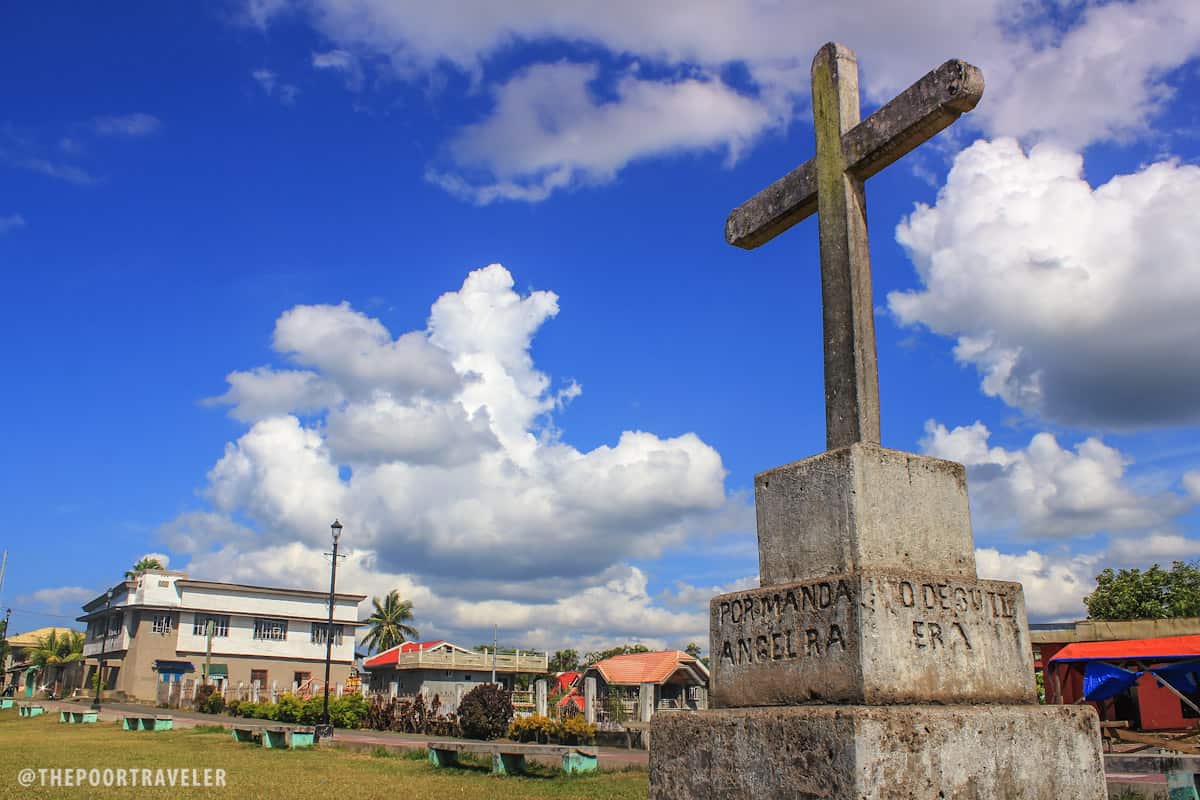
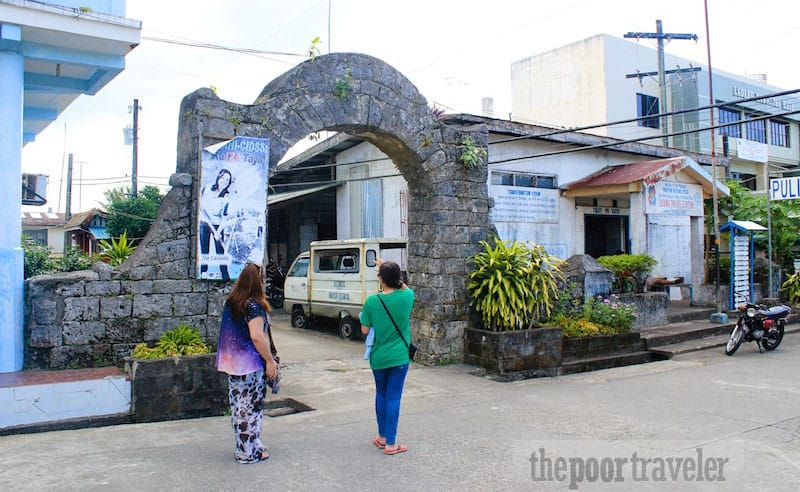
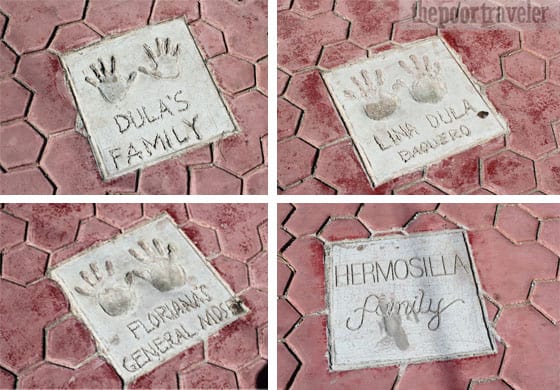
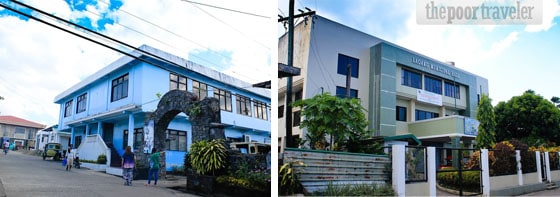
A humble street food stall is stationed at corner of the street adjacent to the Municipal Hall and — being a sucker for street food — I dug in as soon as I spotted it. While their fish balls were nothing extraordinary, their kikiam tasted so good! As I sat there munching, I had a chat with some locals including the vendor. Life in Laoang is really relaxed and laid back, and it shows in the town plaza. No traffic, no pollution, no noise. Well, except the laughter of the kids that were playing just beside the Shrine. I remember my short exchange with Ben, the kid who was trying to jump over the bamboo hurdle, just five minutes ago.

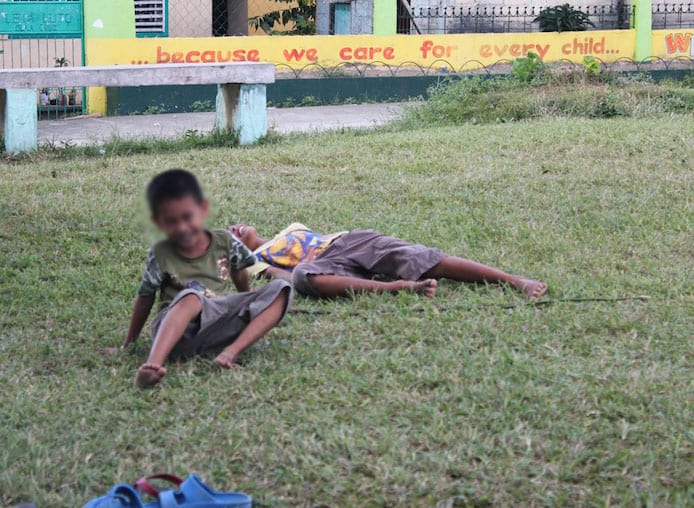
“What do you want to be when you grow up?” I asked. He did not answer. He just let out a tiny laugh.
“What’s your dream? What do you want to do in the future?” I insisted.
“I just want to successfully jump over that stick and beat the shoulder mark,” he answered.
Ah. It’s so nice being a kid.
How to get there: From Manila, fly to Catarman Airport in Northern Samar. Take a tricycle to the “bus station” and ride a jeepney to Barangay Rawis (P60). Hail a trike to the pier then board a small boat to Laoang Island (P7). From Laoang Pier, you can walk to the plaza or ride another trike or habal-habal.
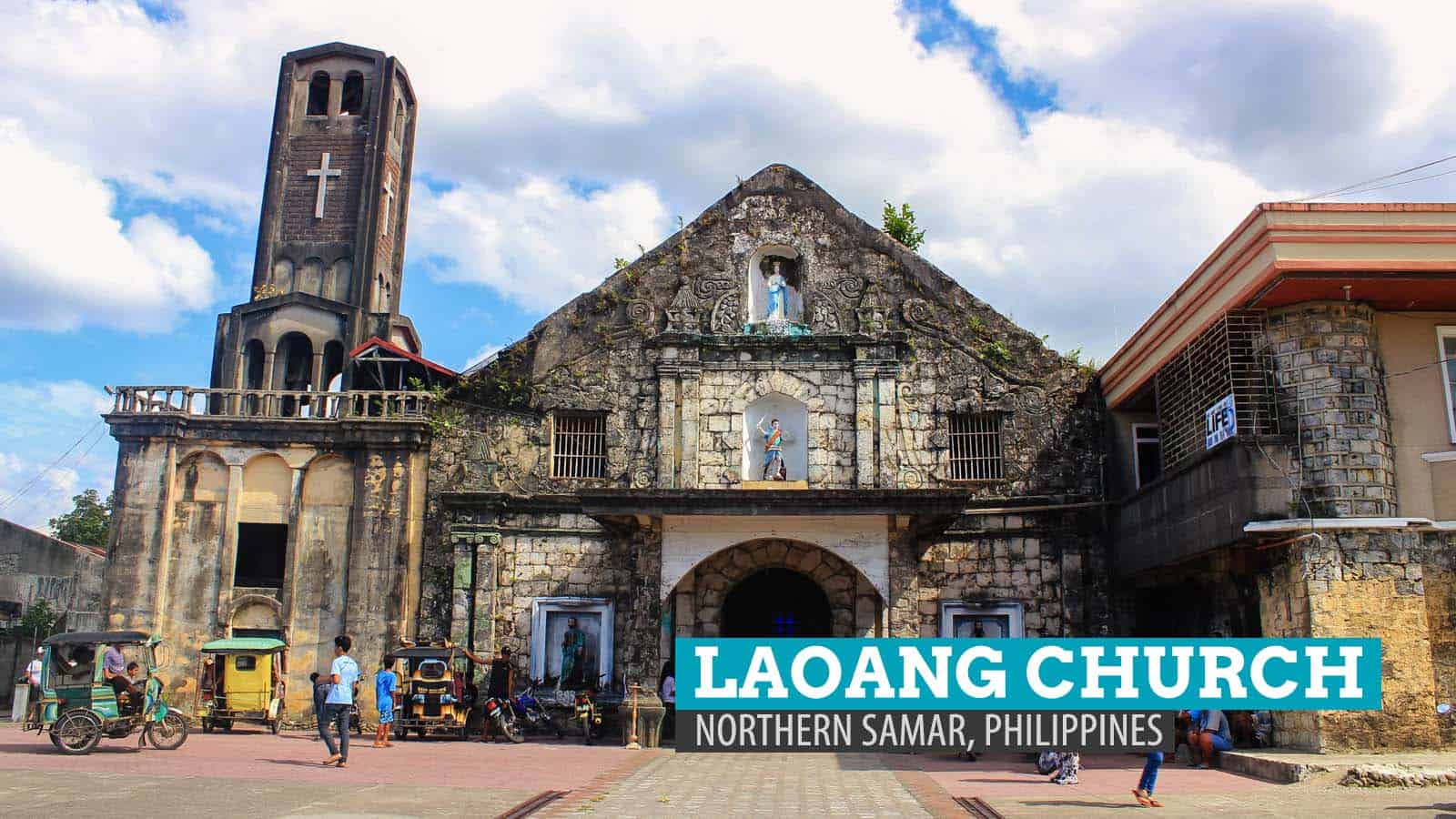





















so glad to see that there are still children in my hometown who are fond of playing outside their homes.. nowadays, children especially in the city are mostly into internet games.. you should have stayed during fiesta, its one of the annual dates that people in our place celebrates and look unto with so many activities a week before the bisperas (vesper day) and kaadlawan (main day of celebration).. nice blog anyway.. kudos for more mood lifting and happy adventures.. :)
Hi DX! The people of Laoang had been so generous to us. They invited me to visit again for the fiesta and offered their homes. :) I will definitely come back because it was one of the best trips I had been on so far. :)
Thank you for featuring our town church..
It’s been a long time since I last saw children playing outside. I’m kinda feeling nostalgic seeing those kids.
Anyway, this is a great post you got here. I enjoyed reading it and looking at those pictures.Maybe you could feature us here in your blog? We’re from Bataan, and I know that you’ll also enjoy it here. There are lots of great place to visit here. You can also stay here on Fav Hotel, offering quite good rates for travelers like us.
kudos to you, more fun ahead!
Hi Kenneth! Yes, I’m planning to visit Bataan this year. :)